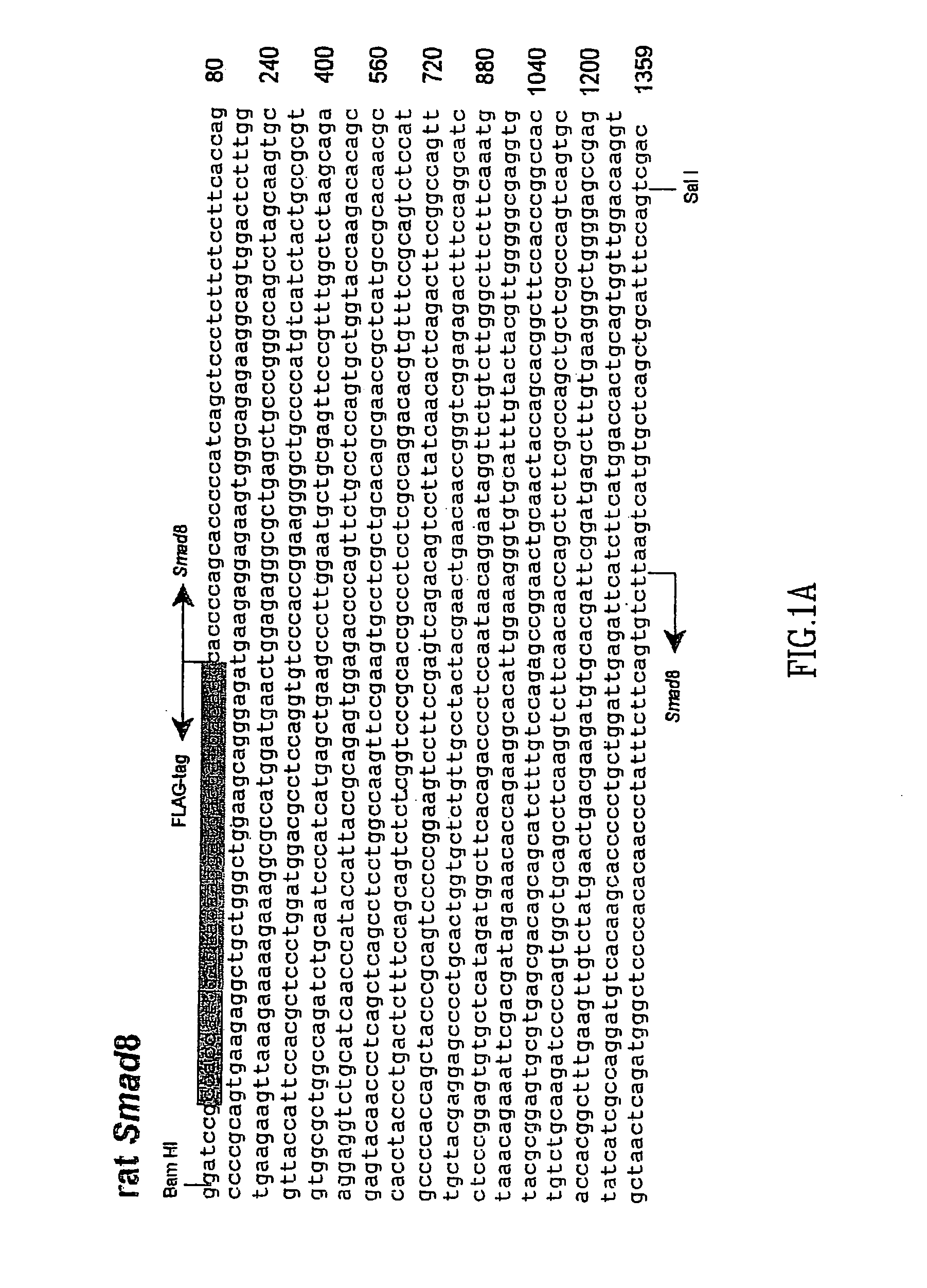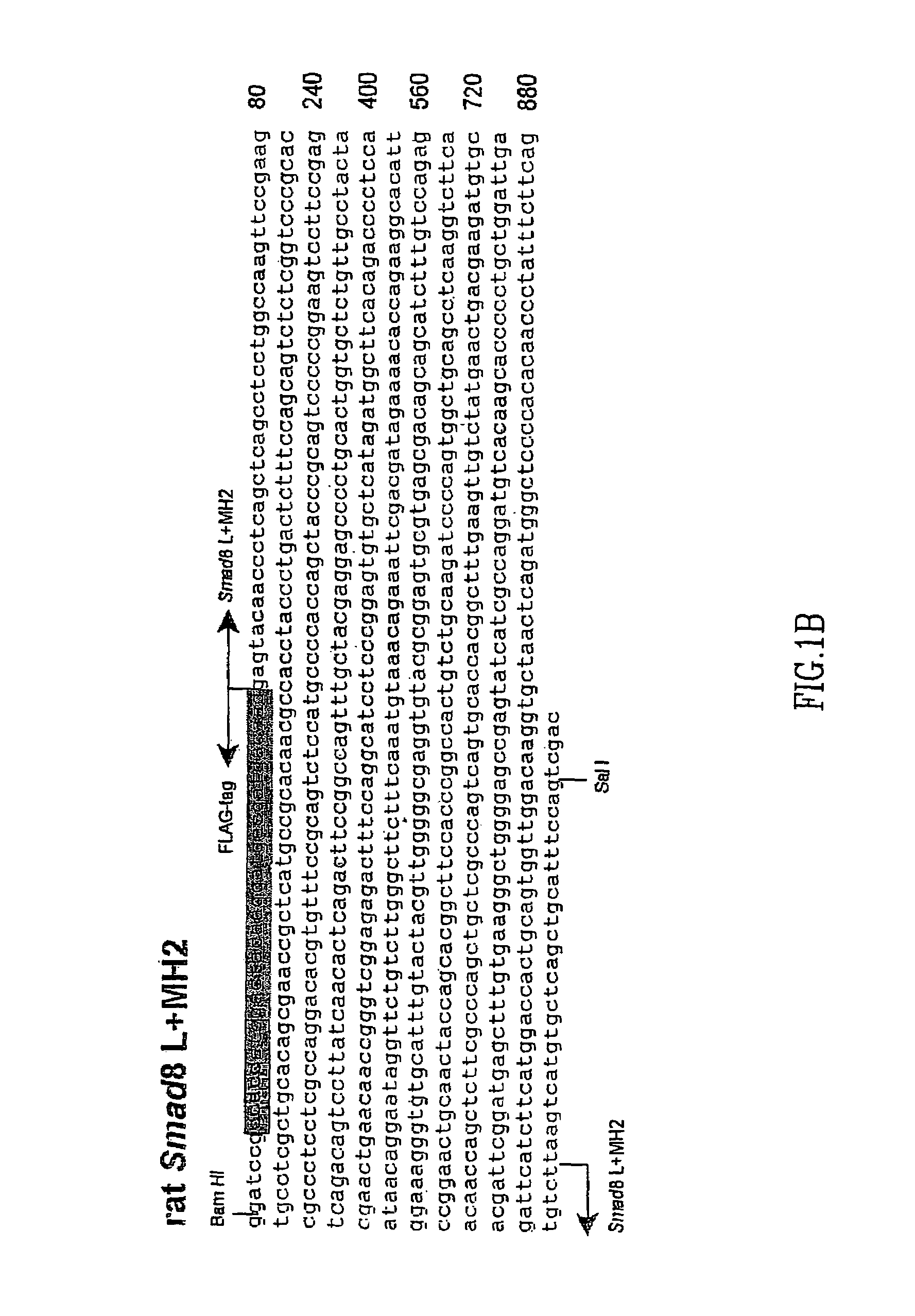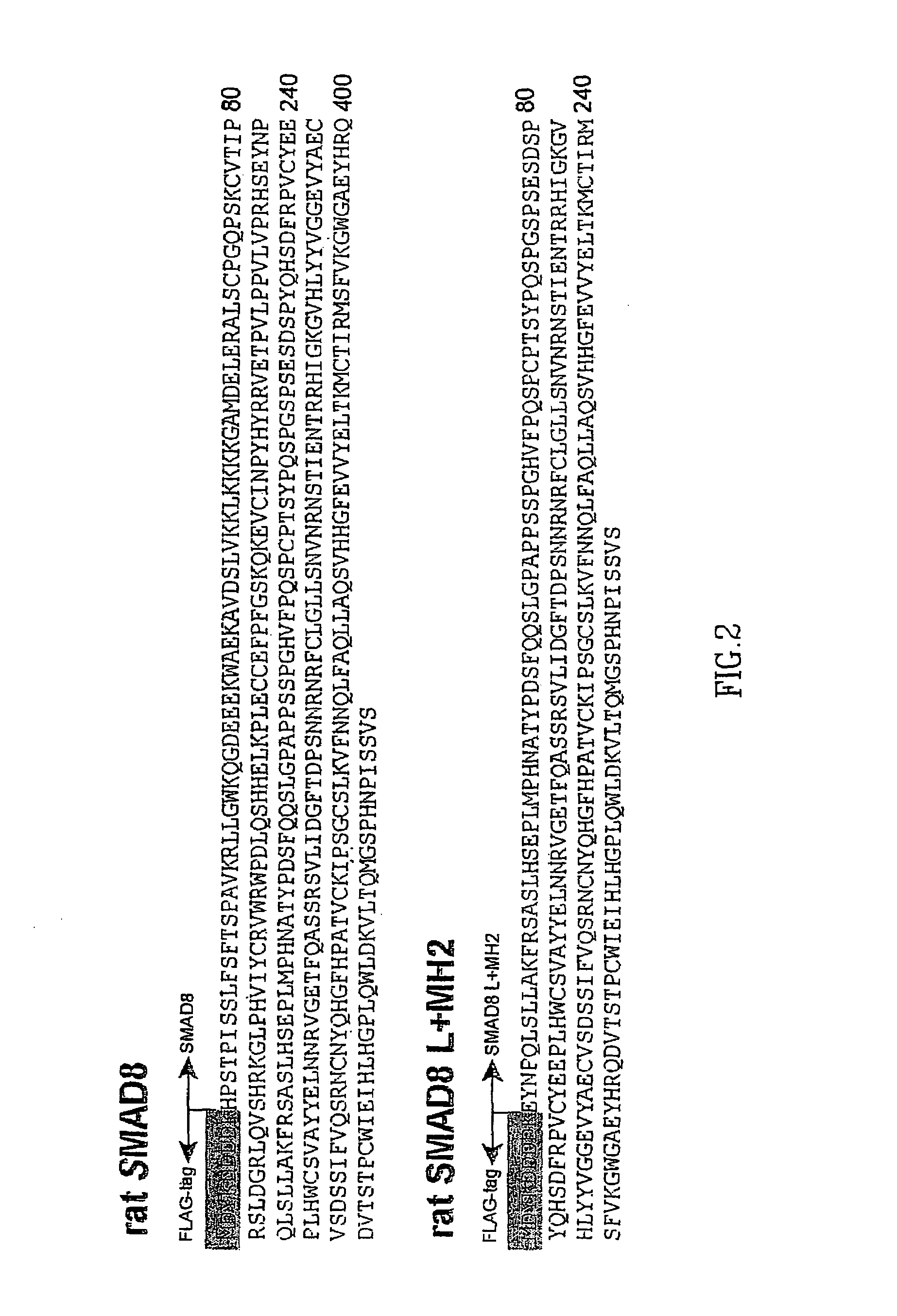Methods of inducing or enhancing connective tissue repair
a technology of inducing or enhancing connective tissue and repair, which is applied in the direction of skeletal/connective tissue cells, genetically modified cells, peptide sources, etc., can solve the problems of scarring and adhesion formation along the length of the tendon, adverse effects on range of motion, and no consensus on the overall best way to repair a given cord. to achieve the effect of inducing repair or treating the connective tissu
- Summary
- Abstract
- Description
- Claims
- Application Information
AI Technical Summary
Benefits of technology
Problems solved by technology
Method used
Image
Examples
example 1
Cloning of SMAD-8 Protein from Rat Brain and SMAD 5 from C3H10T1 / 2 Cells
[0110]The SMAD-8 cDNA was cloned from rat brain (5 days old) by RT-PCR (FIG. 1, shaded). The forward primer contained sequences encoding a FLAG-tag allowing the detection of SMAD-8 with anti-FLAG antibodies (ABs). In front of the startcodon ATG is a consensus Kozak-sequence (FIG. 1, bold letters) allowing efficient translational initiation. Similarly, the SMAD-8 variant consisting of the linker and of the MH2-domain (SMAD-8 L+MH2) were constructed. The protein sequences with the aminoterminal FLAG-tags (shaded) are given in FIG. 2. By a similar cloning strategy SMAD 5 and SMAD 5 L+MH2 were cloned from RNA isolated from C3H10T1 / 2 cells (Methods Section).
[0111]Unique restriction sites (Bam HI and Sal I) in forward and reverse primer-sequences allowed the directional integration in expression vector pMT7T3. SMAD and SMAD-variant expression are in this vector under the control of the LTR of the myeloproliferative vi...
example 2
Establishment of MSCs Lines Expressing SMAD-8 WT, SMAD 5WT and SMAD-8 SMAD 5-Variants L+MH2
[0112]Murine C3H10T1 / 2 mesenchymal stem cells were transfected using FUGENE6 (Roche Diagnostics, Mannheim, Germany). C3H10T1 / 2 cells which recombinantly express BMP2 (C3H10T1 / 2-BMP2) cells were obtained by cotransfection with pSV2pac followed by selection with puromycine (5 μg / ml). Stable expression of the SMAD proteins and their variants in the C3H10T1 / 2-BMP2 background was done by cotransfection with pAG60, conferring resistance to G418 (750 μg / ml). Individual clones were picked, propagated, and tested for recombinant expression by RT-PCR. About 10 individual cellular clones were picked and tested for expression of recombinant SMAD proteins by RT-PCR. Clones which express a high level of the transgene were propagated further and frozen. Selected cell clones were subcultivated in the presence of puromycine or puromycine / G418 and the selective pressure was maintained during subsequent manipula...
example 3
Recombinant Expression of SMAD s in C3H10T1 / 2-BMP2
[0113]The level of SMAD-expression in C3H10T1 / 2-BMP2 was investigated by immunoblotting cellular extracts at day 0, 4, and 7 post-confluence. Confluence has arbitrarily been termed day 0. Western blotting and immuno-detection of FLAG-tagged SMAD s was as described in the Methods Section. In cellular extracts of C3H10T1 / 2-BMP2 the expression of SMAD-8 WT and SMAD 5WT can easily be monitored (FIG. 4). Also FlLAG-tagged SMAD-8 PROTEIN L+MH2 and SMAD 5 L+MH2 domains are detectable and correspond to the expected size (FIG. 4).
PUM
 Login to View More
Login to View More Abstract
Description
Claims
Application Information
 Login to View More
Login to View More - R&D
- Intellectual Property
- Life Sciences
- Materials
- Tech Scout
- Unparalleled Data Quality
- Higher Quality Content
- 60% Fewer Hallucinations
Browse by: Latest US Patents, China's latest patents, Technical Efficacy Thesaurus, Application Domain, Technology Topic, Popular Technical Reports.
© 2025 PatSnap. All rights reserved.Legal|Privacy policy|Modern Slavery Act Transparency Statement|Sitemap|About US| Contact US: help@patsnap.com



